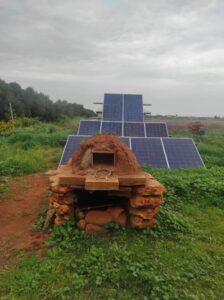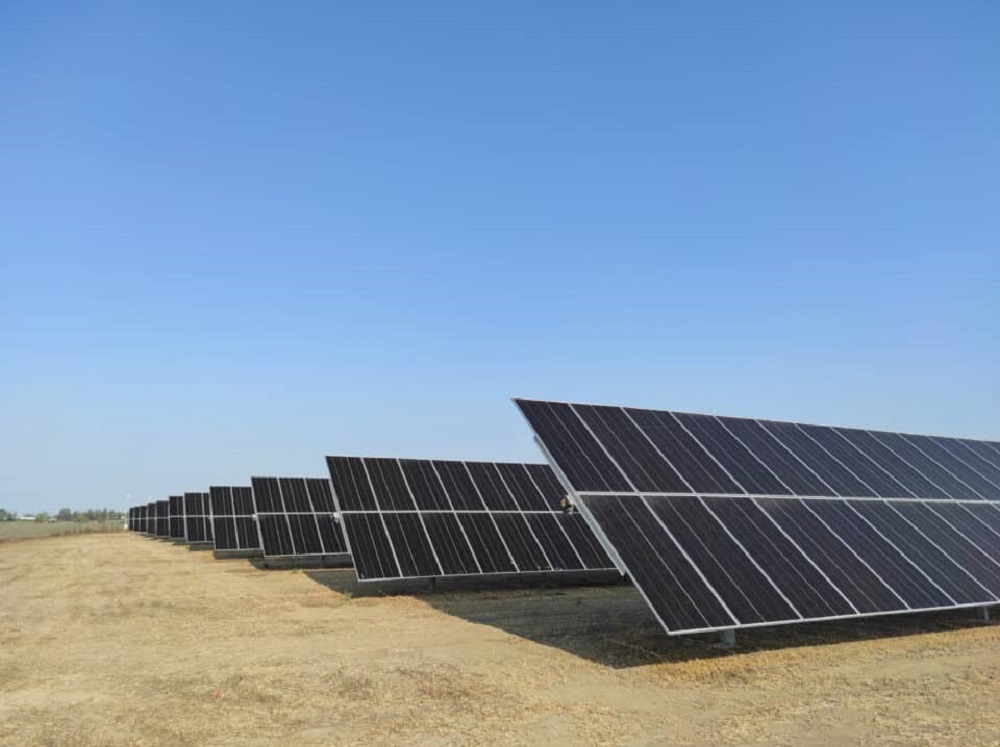Agrivoltaics seem to offer the perfect solution to the problem of appropriating farmland for solar parks, but are they a nonstarter in Cyprus? As with everything energy-related, things are not black and green
The march of green progress in the form of PV parks is not without some trepidation, and a growing number of communities have been sounding the alarm over unwanted consequences of what has become something of a green-rush across the land.
MPs in May raised concerns over the uncontrolled development of PV parks that are approved without adequate assessment of their impact on the environment and on agriculture.
Communities, including Akaki, Alambra, Anarita, Ayia Varvara, Frenaros, Kouklia, Mandria, Potamia, Timi and Trimiklini, among others, have raised concerns ranging from doubts over the adequacy of studies, to the felling of trees, biodiversity loss, the shrinkage of fertile – and residential – lands, the mammoth size of parks, and the fact that these are given over to private interests, rather than owned by and benefitting the communities in whose midst they are built.
It would indeed be unfortunate if the state, in its sudden zeal for green energy, sets us up for grief in other areas that significantly impact sustainability and dismantle rural communities.
Agrivoltaics, more correctly known as agrophotovoltaics (APVs), at first glance appear to be the perfect solution to the dilemma of swapping food-producing land for energy-producing land because, in theory at least, they offer the capacity to do both.
But, as with anything that looks too green to be true, scratch the surface and a whole host of pesky issues arise.
For a start, according to Polis Polykarpou, chief research officer at the Institute of Agricultural Research, we are currently ill-prepared to assess the comprehensive impact of existing or prospective conventional PV parks, let alone APVs.
Moreover, the APV concept is still relatively new, but data from other countries suggest that up to a third of crop yield can be lost when cultivating with such a system.
Despite, or perhaps because, of this, in May 2020, Balkan Green Energy News announced “the first agrivoltaic project in Cyprus”. The project was described as a 13MW installation, with a battery system and agricultural activity, to be undertaken by Thalis Engineering on behalf of Royal Valley.
The innovative project in an agricultural zone of Potamia, Ayios Sozomenos area was to be used for simultaneous production of electricity and agriculture, possibly by growing animal feed (clover) around a raised-panel system.
However, three years later, a visit to the site reveals that the specialised panels are certainly there but nothing is happening below them.
Spiros Pieras, the project’s Etek licensed architect, explained that the park covers two separate plots, was installed following commissioned environmental studies, and that the panels are placed on raised, single-axis trackers.
The two infrastructures, producing 5.2MW and 4.7MW of electricity, are installed on 95- and 91-hectare plots respectively.
According to Pieras, the permit for the plant was not granted on condition that agricultural activity be carried out, although the capacity is there.
The panels face east in the morning, west in the afternoon, and at midday they are horizontal, during which time a tractor could, theoretically, pass beneath them but none does.
According to the agriculture department, the state has so far received a total of 79 applications from interested APV investors, 24 of which have been accepted, with two permits granted to date.
The idea, according to Polykarpou, was for two private companies to be granted permits to run ‘pilot’ parks and gather data, which was then to be provided for analysis to the institute, before rolling out APV parks on a larger scale.
It is important to outline why PV companies are in competition with farmers for land at all. Couldn’t the panels just be slapped on mall roofs, parking structures, barren hillsides and ‘dead’ lands like abandoned mines or landfills?
The fact is, for ease of construction as well as operation, solar park investors prefer land that is flat, has road-access, and is close to transmission lines – in order to readily supply the grid.
And this is why agriculturally zoned land, which generally has the added bonus of being valued cheaper, is being eyed so lustfully by would-be green diggers.
What about mandating APV installations or somehow incentivising them over conventional ones?
For a start, APV installations can cost anywhere from 20 to 30 per cent more to install, Charis Kordatos Cyprus Energy Agency expert says.
Kordatos, who specialises in the environmental impact of Renewable Energy Sources (RES) installations, adds that the matter of mandating APVs can’t even be a concept at the moment, since technically no solar park of any sort may be built on fertile agricultural land.
The agriculture department classifies available land by criteria according to which land falls into high, low, or medium fertility categories, and this is the supposed framework to determine suitability, Kordatos says.
However, the fact is, many, if not most, solar parks worldwide end up on forests and farmlands, and the problem is not unique to Cyprus.
“We must look at the matter holistically,” Kordatos says, “because well-managed land can also mitigate climate change – if carbon neutrality is the goal. Soil and wildlife preservation, including scrublands, sequester carbon, prevent erosion and filter pollutants out of the water table. They also prevent desertification.”
As Kordatos sums it up pointedly, in our scramble for green energy, “are we reforesting one area while denuding another?”
Among the questions to be pondered then, are: do we want to swap ‘clean’ (and hopefully cheap) energy for less healthy and more expensive food?
All these considerations are over and above, arguably, more minor ones: visual blight, the clash with historical preservation, the loss of wildlands.
Perhaps, Kordatos suggests, one approach is to restrict PV park size. Another idea is to avoid APV set-ups that require a lot of tinkering and prolonged study to home in on the shade-tolerant crop that works for Cyprus.
Limiting ourselves to a simple model that avoids machinery, such as fodder grown along raised or dual-use APV systems and used to feed ruminants milked for PDO halloumi, may be the way to go, Kordatos suggests.
One idea that seems to not be on anyone’s radar, however, is to incentivise small holders who wish to cultivate sustainably and, in the process, actually invest in soil regeneration.
What could happen, for example, if partnerships were created with several farmer, paid the first few years of an APV operation, simply for working organic matter back into the soil?
Instead of the RES park denuding the land, the opposite – soil enrichment – would be happening. In this way, the state could hit two targets: sustainable food production and clean energy.
Once the soil was ready for planting, the farmers could contribute on an ongoing basis to research in collaboration with an educational institute, or NGO, rather than a distant RES company, where conflict-of-interest issues could, possibly, hamper progress.
Taken as a whole, however, it may be that decentralised off grid electrification is actually, after all, the best use of PVs in rural areas.
If a small farmer (or village for that matter) can afford to install an autonomous system, adequate to power their own needs, why would they be motivated to see their land covered in an inconvenient and aesthetically displeasing APV installation?

In recent weeks, another APV park which has again been touted as a “first” is being considered within the community boundaries of Sotira in Famagusta, about 3km from Paralimni lake. According to the municipality, the final go-ahead has yet to be granted.
Official documents from the ministry of agriculture describe the 715.2KW park as intended to be built on a 9,905 square metre plot and to function as a dual-purpose APV model with Cucurbitaceae (squashes) grown between rows.
The document states the plot is designated as high fertility, irrigated land, and therefore conditions of intensive cultivation must be upheld throughout the project’s lifespan.
Meanwhile, for his part, Yiannos Minas, community leader of Potamia, where the chimeric “first” model-APV park sits, was adamant that the community does not want any more parks on its turf.
“The village is landlocked along the buffer zone and our only possible direction to expand is bang-smack where a solar park was approved,” Minas says.
“The size of the proposed park is 252,000 square metres, 25m from a residential area, 118m from the famous Katerini Kornarou estate,” he adds. “As a community, we are utterly opposed to it. And we will take the matter to the court.”

